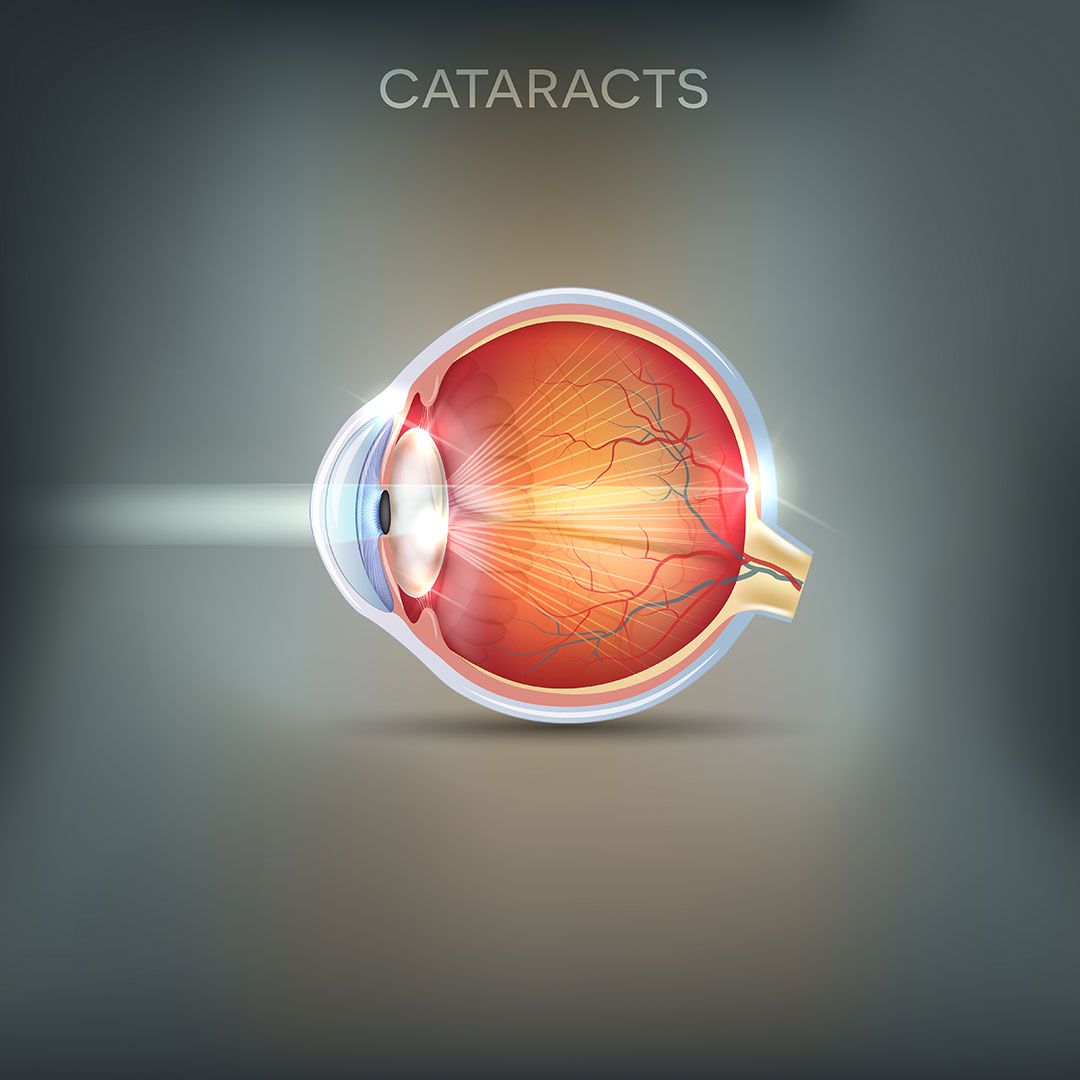What is a cataract?
This is a clouding of the lens in the eye, which is normally transparent. A cataract interferes with the function of the lens and causes gradual deterioration of vision. Most cataracts result from the ageing process of the natural lens.
Other causes include trauma to the eye, medications such as steroids, general health conditions such as diabetes, or they may be inherited.
Other causes include trauma to the eye, medications such as steroids, general health conditions such as diabetes, or they may be inherited.


Symptoms
These usually appear gradually and can include:
- Cloudy, misty vision (like looking through frosted glass)
- Glare from light sources (difficulty in sun or driving at night)
- Poor vision at night or in dim light conditions
- Change in colour perception (such as colours appearing less bright or with a yellow tinge)
- Frequent changes in spectacle prescription
- Double vision (which persists with one eye covered)
- Difficulty reading
Is surgery the only treatment?
In the early stages of cataract formation, a different spectacle prescription may improve vision. Once a cataract has formed it cannot be cured by eye drops, medication or eye exercises. The treatment for cataract is surgical removal and replacement with an artificial intraocular lens (IOL) implant.
The decision regarding cataract surgery varies from patient to patient and is based on each individual patient’s needs. Surgery is advised if vision difficulties can be partially or fully attributed to cataracts and there is no need to wait for cataracts to develop or ‘mature’.
Mr Patel will thoroughly assess your eyes and advise you on the suitability for cataract surgery and the options available.
The decision regarding cataract surgery varies from patient to patient and is based on each individual patient’s needs. Surgery is advised if vision difficulties can be partially or fully attributed to cataracts and there is no need to wait for cataracts to develop or ‘mature’.
Mr Patel will thoroughly assess your eyes and advise you on the suitability for cataract surgery and the options available.
Copyright © 2019. Amit Patel


